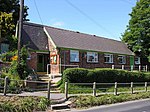Walkington Hoard
1999 archaeological discoveriesArchaeological discoveries in the United KingdomCoin hoardsCollections of the Yorkshire MuseumHoards from Iron Age Britain ... and 4 more
Metal detecting finds in EnglandTreasure troves in EnglandTreasure troves of the Iron AgeUse British English from December 2019

The Walkington Hoard is a hoard of Corieltavian gold staters. They are a widely-scattered hoard which have been found by metal-detectorists over the course of a decade.
Excerpt from the Wikipedia article Walkington Hoard (License: CC BY-SA 3.0, Authors, Images).Walkington Hoard
Walkington Heads,
Geographical coordinates (GPS) Address Nearby Places Show on map
Geographical coordinates (GPS)
| Latitude | Longitude |
|---|---|
| N 53.82961974 ° | E -0.50186092 ° |
Address
Walkington Heads
Walkington Heads
HU17 8TD , Bishop Burton
England, United Kingdom
Open on Google Maps










